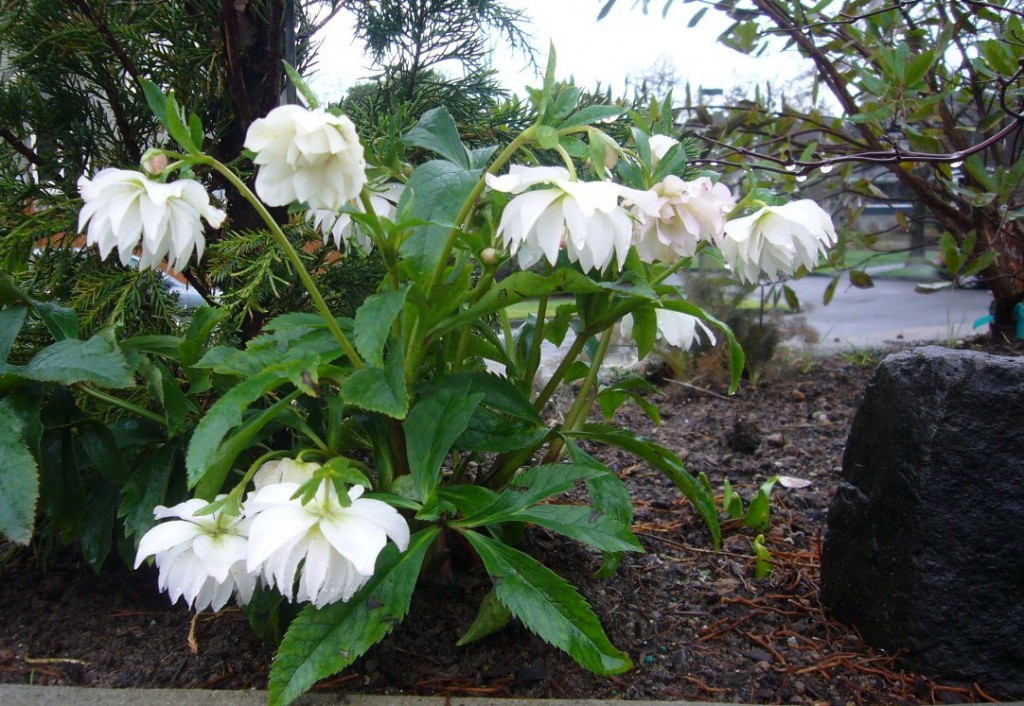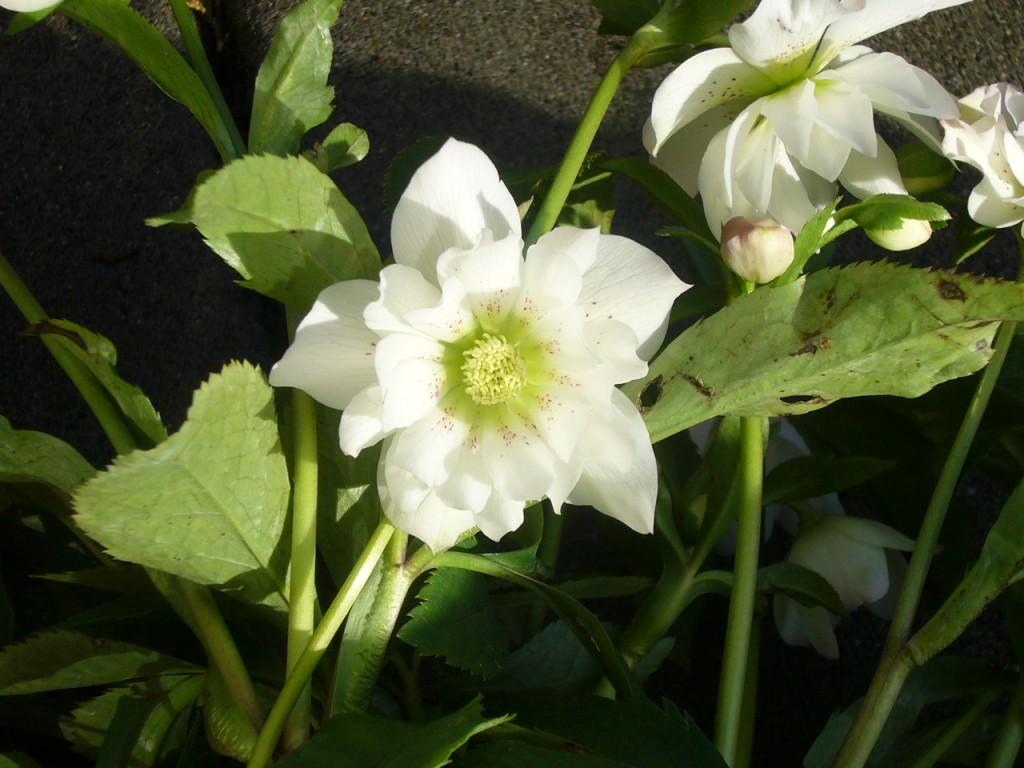Helleborus orientalis ‘Mardi Gras Double”
It was 34° F this morning, as it has been for the last couple of days, but it doesn’t bother Helleborus orientalis one bit. For many years I had assumed that Hellebore was either native to the UK or maybe the PNW because they were living with the cold and rain just like the rest of us here, none the worse for the wear. In fact, Hellebore is of European origin, and the variety Helleborus orientalis spedifically is native to Greece, Turkey and the Caucasus.
Hellebore orientalis (a.k.a Lenten Rose or winter rose) and is an evergreen that blooms December-February, when its yearly glamor is over. The rest of the year they provide a nice foliage accent. Hellebore is easy for the beginning gardener and is not plagued with many diseases or pests, however nothing is completely “care free” in the garden.
As knowledgeable Seattle-area gardener Judy Thomas (who is also an amazing garden artist) reminded me, cutting off old leaves when it starts to bloom will do two things: prevent botrytis and show off the flowers better. I have to admit I hate doing that, but I know she is right because botrytis is a fungus that lives off of plant debris. I also have peonies and strawberries not far from my hellebore in some areas, and they are also susceptible to botrytis so I just take a deep breath and cut off those old leaves. I’ll keep most of the new ones for now since there aren’t that many. You can see one of the leaves I’m going to cut off in the photo below.
Hellebore orientalis ‘Mardi Gras Double’ is a hybrid hellebore with slightly larger than average flowers that have a cup-like shape. The buds have a pinkish hue and open into a white bloom that has pinkish red speckles near the center. As the flowers age they will become more consistently light pink.
Plant your hellebore where it will have full to partial shade, moist well-draining soil, and a little shelter. Two of my favorite hellebores are planted under a Japanese Laceleaf “Red Dragon” so they have shelter from the elements. The spot would be too sunny later in the season, but by that time the laceleaf is providing a shady umbrella but still allows plenty of air circulation. I also like to plant winter blooming plants near the walkways, windows, or anywhere I can see them as I arrive home to provide maximum impact in preventing the winter blahs.
Click here to see what the Mardi Gras looks like in 2012.


Pingback: Tweets that mention Helleborus orientalis 'Mardi Gras Double' | Fresh by Northwest -- Topsy.com